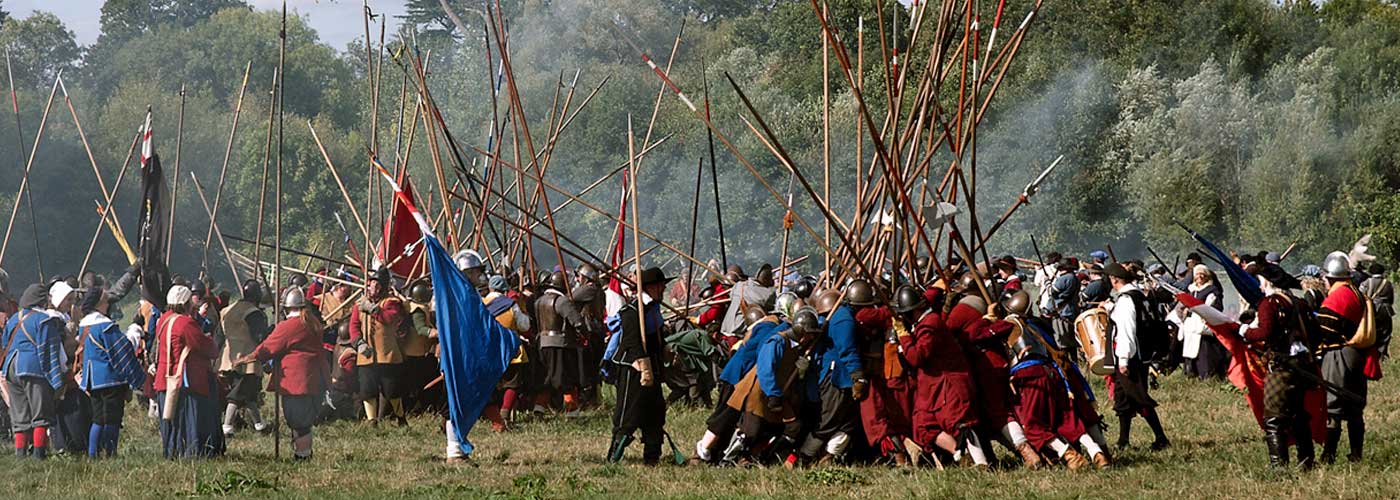Image Credit: 360th anniversary of the Battle of Worcester, by Mike Peters
About the Battle of Worcester provided by Dr. Arran Johnston of Scottish Battlefields Trust.
“After his victory at the Battle of Dunbar on 3 September 1650, Oliver Cromwell captured Edinburgh. The Scots were far from finished, however. Fighting continued over the winter, whilst David Leslie set about rebuilding his army at Stirling. Cromwell therefore found it difficult to break out of the south of Scotland. Meanwhile, the Covenanters responded to their defeat at Dunbar by turning, with various degrees of enthusiasm, to Charles II for leadership. Former Royalists were now admitted into the army, and the 20 year old king was crowned in January 1651 by some of his father’s former enemies. With most of southern Scotland now under English control, Charles and Leslie relied more heavily on northern Scotland for recruitment.
The English forces managed to bypass the Scots’ position at Stirling by forcing a river crossing at the Battle of Inverkeithing in July 1651. But instead of withdrawing, Charles II persuaded his commanders to launch the Scottish army in a daring dash into England. It was hoped that this would re-ignite English royalist sympathy. It was an audacious move, and the king’s army marched down the western side of England where it believed support was likely to be strongest. Charles had underestimated the war-weariness of his sympathisers however, and he found little proactive support. To many, the Scottish army felt more like an invader than a liberator. Leaving a deputy to continue the war in Scotland, Cromwell returned to England where his army quickly swelled. The king reached Worcester on 22 August, only about 115 miles from London. But there he stopped, hoping for support which would never fully materialise: the main column of English royalist reinforcements was defeated before it reached him. Cromwell’s forces concentrated around the walled cathedral town of Worcester, which the Scots were busily fortifying. With around 28,000 men at his disposal, Cromwell was able to spread his army in a wide arc, trapping the smaller royalist army within (Charles had around 16,000). The Battle of Worcester began on 3 September 1651, exactly a year later after the fight at Dunbar. The Cromwellians attacked the Scottish positions along the river Teme to the south of the city, with Dunbar veterans leading the fight on both sides. The Scots fought hard and Cromwell was obliged to dispatch reinforcements to force the crossings. King Charles saw a glimmer of hope as Cromwell’s centre was therefore weakened: he launched an heroic charge out of the city, right into the teeth of Cromwell’s guns. The fighting was intense but the weight of numbers broke the Scottish assault. The counter-attack turned the Scottish retreat into a rout, spilling over the defences of the Fort Royal bastion, which can still be seen today. The Scottish positions at the Teme were also now being driven back towards Worcester. The fighting continued into the streets of the town, from which there was now no escape for the Scottish soldiers. The king narrowly avoided death or capture himself, escaping after a number of close calls into a further nine years of exile.
The Scottish army’s losses were similar to those at Dunbar, but the fighting had been much more protracted and Cromwell also lost hundreds of dead and many more were wounded. David Leslie, who had played a lacklustre part in the battle, attempted to retreat with his untested division but they were pursued and he was captured. Back in Scotland, George Monck continued to lead the grinding Cromwellian war effort and eventually brought most of the country to heel. It was governed as part of the new Commonwealth until Charles II was restored to the throne peacefully in 1660 – with Monck’s help!”




